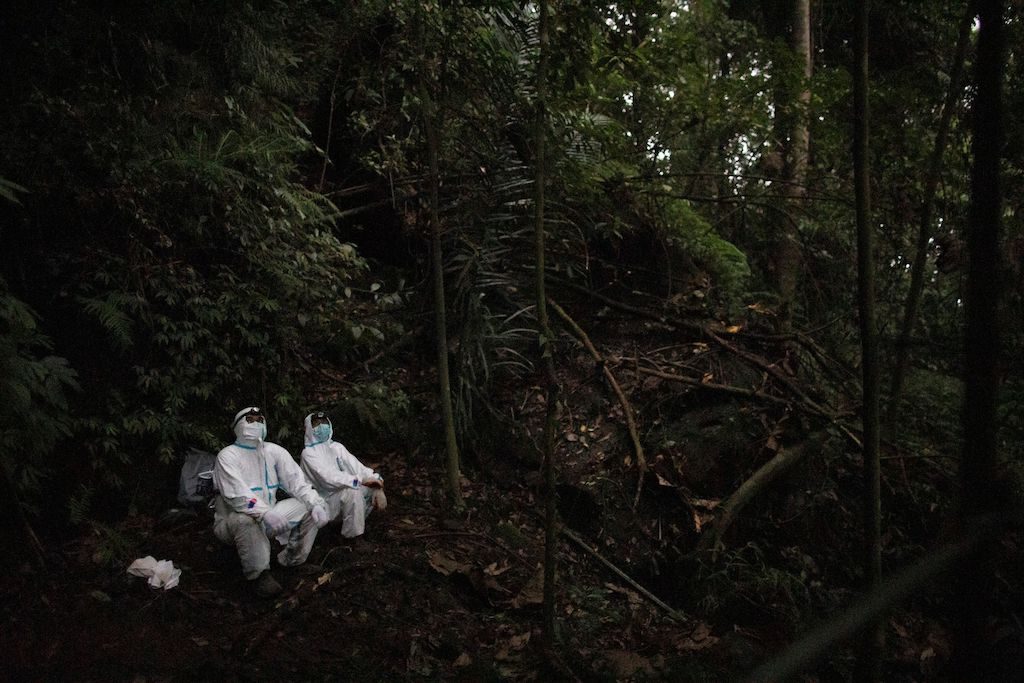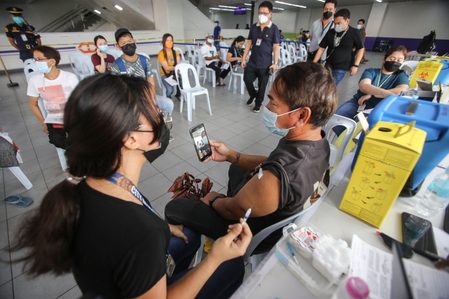SUMMARY
This is AI generated summarization, which may have errors. For context, always refer to the full article.

MANILA, Philippines – The Philippines continues to stay at low risk for COVID-19, with an average of 213 new cases reported daily in the recent week. The Department of Health also reported the county’s first recorded case of the Omicron subvariant BA.2.12, which is among the subvariants driving a fresh surge of infections in the United States.
Here’s what we’re watching this week of May 1, 2022:
Climate change and viral spillovers
A warming world is giving viruses an unprecedented opportunity for spilling over among different animal species, increasing the risk that one could jump into humans and cause a new pandemic, a new study published on Nature found.
- These were among findings of a research done by global-change biologist Colin Carlson of Georgetown University and his colleague Greg Albery. They created a simulation mapping the past, present, and future ranges of 3,100 mammal species, which predicts the likelihood of viral spillovers if those ranges overlap.
- As temperatures rise, animals are expected to move to find more comfortable habitats, which could force some species to come into contact for the first time, allowing viruses to infect new hosts.
- The study involved 3,139 species, with researchers anticipating over 4,000 instances in which viruses would move from one species to another.
- “The researchers were not able to say exactly which viruses would move between which species. What matters, they argued, is the sheer scale of what’s to come,” the New York Times reported.
- Bats is Southeast Asia are particularly prone to these transmissions. Currently, diverse bat species in the region don’t often come into contact with one another, but as the planet warms, bats will fly to more suitable habitats and come into contact with new species.
- “Bats account for the majority of novel viral sharing, and are likely to share viruses along evolutionary pathways that will facilitate future emergence in humans,” the study said.
- Take this for instance, as the Times reported: “The coronavirus that caused SARS in 2002 originated in Chinese horseshoe bats and then jumped to another species — possibly raccoon dogs sold in Chinese animal markets — before infecting people.”
- Researchers found that this ecological transition is already underway and that keeping rising temperatures below 2 °C within the century “will not reduce future viral sharing.” This has prompted experts to argue that the world is moving from the “Anthropocene” era, where humans dominated over the Earth’s environment, into a
“Pandemicene,” characterized by diseases’ influence on humanity. - Carlson told the Atlantic: “The moment to stop climate change from increasing viral transmission was 15 years ago. We’re in a world that’s 1.2 degrees warmer [than preindustrial levels], and there is no backpedaling. We have to prepare for more pandemics because of it.”
- Findings of the study matter for the whole world, and give more urgency for pandemic preparedness in the Philippines, which is in a region that is especially spillover-prone.
- That means strengthening public health and health care systems further, reinforcing social safety nets, and adequately addressing long-ignored vulnerabilities exposed by the COVID-19 pandemic.
Watching South Africa
Scientists and health officials in South Africa have said that the country may be entering its fifth wave earlier than expected after infections increased over the past 14 days, the rise appearing to be driven by the BA.4 and BA.5 Omicron subvariants.
- Joe Phaala, South Africa’s health minister, earlier said that while hospitalizations were going up, there was so far no dramatic change in intensive care unit admissions or deaths.
- Experts said waning immunity from previous waves could be among the factors contributing to the earlier-than-expected resurgence in cases.
- Based on current data, reinfection is known to be possible in about 90 days or three months. Read this edition of Rappler’s COVID-19 Weekly Watch for more insight.
- A quick recap: The two subvariants are already being monitored by the World Health Organization (WHO) due to “additional mutations that need to be further studied to understand their impact on immune escape potential.”
- So far, there is no sign that BA.4 and BA.5 have a change in epidemiology or severity, but this could change as more data is gathered.
- The Philippine Department of Health has urged the public to avail themselves of boosters in light of the threat posed by new subvariants. Booster uptake has been slow, with just over 14 million Filipinos boosted. ”The DOH thus implores the public to get boosted ASAP, as immunity is proven to wane over time,” it said.
Decline in testing
A marked decline in testing has prompted the WHO to call on governments to maintain sufficient surveillance of the virus to maintain public safety and ensure that the WHO has data needed to provide guidance and track the virus. COVID-19 remains a pandemic, and countries must keep surveillance systems in place to monitor epidemiological trends and emerging variants.
- Global testing has fallen by some 70% to 90% in the past four months, the WHO said.
- “Without additional data, the extent to which the decline in testing is a function of slowing transmission, changes in national policies or capacities, or other factors is unclear,” Johns Hopkins’ Center for Health Security said.
- Unlike the start of the pandemic, the world has an “unprecedented ability” to test for COVID-19 now, yet testing has become “first casualty” of a global decision to move on from the pandemic, the WHO said.
- “Rather than learn again the lesson that shutting down testing programs prematurely is always a mistake, it always costs more money in the end, it always costs more lives, we make that same mistake that we’ve made so many times in the course of the pandemic and we have a strategy that’s based on hope rather than a strategy based on data,” said Dr Bill Rodriguez, who leads FIND, the global alliance for diagnostics.
- WHO Director General Tedros Adhanom Ghebreyesus added: “This virus won’t go away just because countries stop looking for it. It’s still spreading, it’s still changing, and it’s still killing. The threat of a dangerous new variant remains very real.”
Catch up quick: The Philippines began rolling out second boosters to select populations last April 25. Find out if you’re eligible here:
– Rappler.com
Add a comment
How does this make you feel?

There are no comments yet. Add your comment to start the conversation.